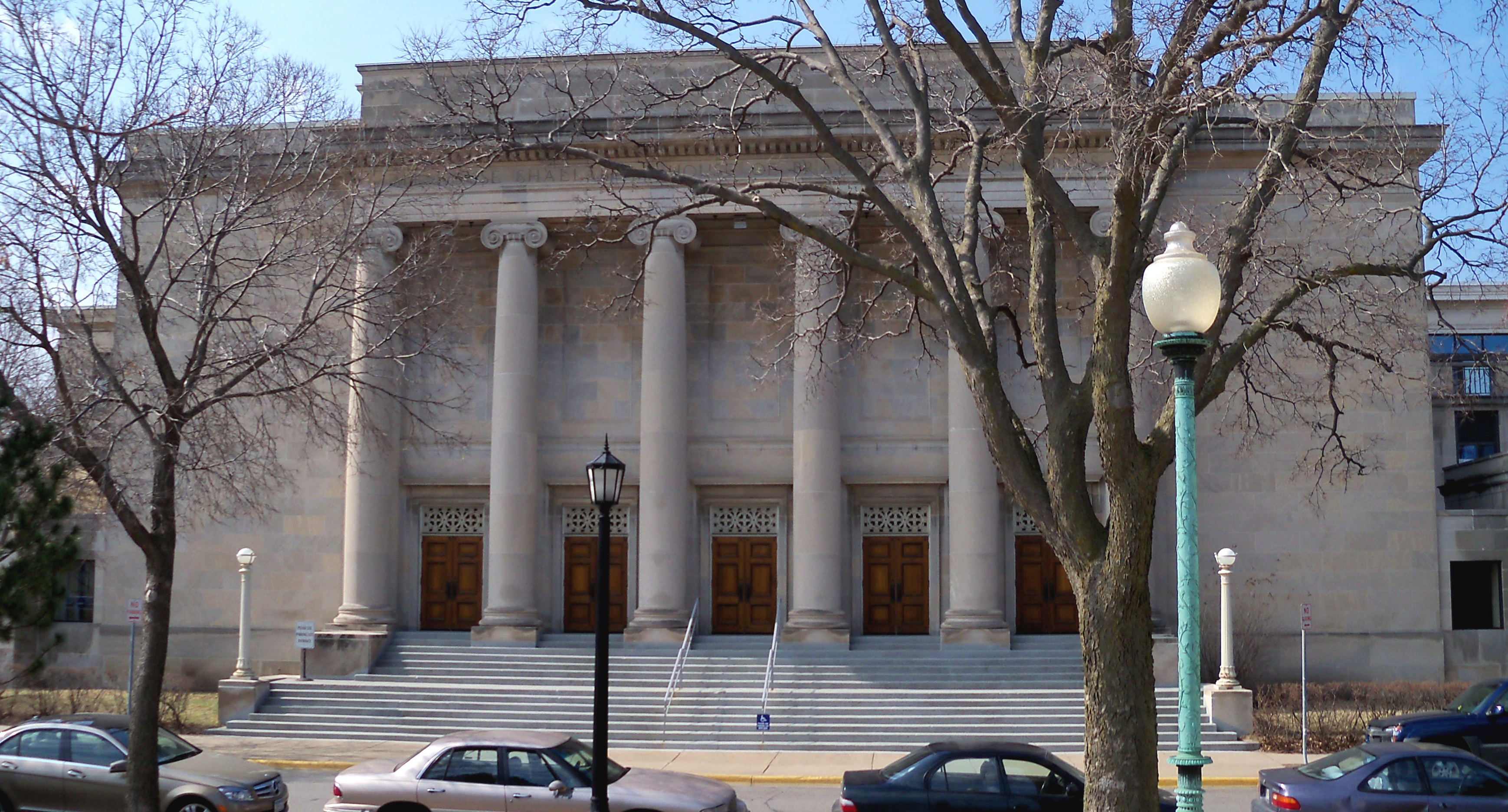Temple Israel (Minneapolis, Minnesota) on:
[Wikipedia]
[Google]
[Amazon]
Temple Israel is a 

Temple Israel, a brief history: 1878-1987
Minneapolis, Minn: Temple Israel. * Minda, Albert G. (1971)
The Story of Temple Israel, Minneapolis, Minnesota: A Personal Account
Minneapolis, Minn.: Lund Press.
Official website
*Finding aid to th
Temple Israel records
at th
Upper Midwest Jewish Archives, University of Minnesota Libraries
{{DEFAULTSORT:Israel (Minneapolis, Minnesota) Jews and Judaism in Minneapolis–Saint Paul Reform synagogues in Minnesota Moorish Revival synagogues Neoclassical synagogues Religious organizations established in 1878 Moorish Revival architecture in Minnesota
Reform Jewish
Reform Judaism, also known as Liberal Judaism or Progressive Judaism, is a major Jewish denomination that emphasizes the evolving nature of Judaism, the superiority of its ethical aspects to its ceremonial ones, and belief in a continuous searc ...
synagogue
A synagogue, ', 'house of assembly', or ', "house of prayer"; Yiddish: ''shul'', Ladino: or ' (from synagogue); or ', "community". sometimes referred to as shul, and interchangeably used with the word temple, is a Jewish house of wor ...
in Minneapolis, Minnesota
Minneapolis () is the largest city in Minnesota, United States, and the county seat of Hennepin County. The city is abundant in water, with thirteen lakes, wetlands, the Mississippi River, creeks and waterfalls. Minneapolis has its origi ...
. Founded in 1878, it is the oldest synagogue in Minneapolis and one of the largest Jewish congregations in the United States.

Early history
Temple Israel, originally called Shaarai Tov ("Gates of Goodness"), was founded in 1878 by German-speaking Jewish merchants. Their first house of worship, built in 1880, was located on Fifth Street between First Avenue (later Marquette Avenue) and Second Avenue South; it was a small, wooden synagogue in the popularMoorish Revival
Moorish Revival or Neo-Moorish is one of the exotic revival architectural styles that were adopted by architects of Europe and the Americas in the wake of Romanticist Orientalism. It reached the height of its popularity after the mid-19th centu ...
style. In 1888, the congregation moved to Tenth Street and Fifth Avenue South. When the synagogue burned down in 1902, the congregants erected a new synagogue in stone on the site of the lost building.
In 1901, Shaarai Tov hired Rabbi Samuel N. Deinard, an influential rabbi who helped grow the congregation. He acted as mediator between his Americanized congregants and the Eastern European Jewish immigrants who lived in North Minneapolis. Deinard also founded a local Jewish weekly newspaper, the ''American Jewish World'', in 1912. In 1914, the congregation moved to its current location, this time to the corner of West Twenty-Fourth Street and Emerson Avenue South. In 1920, Shaarai Tov became Reform
Reform ( lat, reformo) means the improvement or amendment of what is wrong, corrupt, unsatisfactory, etc. The use of the word in this way emerges in the late 18th century and is believed to originate from Christopher Wyvill's Association movement ...
and changed their name to Temple Israel. In September 1912, Deinard organized a visit from Baháʼí Faith
The Baháʼí Faith is a religion founded in the 19th century that teaches the essential worth of all religions and the unity of all people. Established by Baháʼu'lláh in the 19th century, it initially developed in Iran and parts of the ...
leader `Abdu'l-Bahá—visiting Minneapolis while on a speaking tour of the U.S.–who gave a public talk on Baháʼí teachings
The Baháʼí teachings represent a considerable number of theological, ethical, social, and spiritual ideas that were established in the Baháʼí Faith by Baháʼu'lláh, the founder of the religion, and clarified by its successive leaders: ʻA ...
and the spiritualization of society at Temple Israel. In 1928, a new synagogue was built on the same site, this time by the firm of Jack Liebenberg and Seeman Kaplan; this neoclassical revival-style building remains a landmark overlooking Hennepin Avenue
Hennepin Avenue is a major street in Minneapolis, Minnesota, United States. It runs from Lakewood Cemetery (at West 36th Street), north through the Uptown District of Southwest Minneapolis, through the Virginia Triangle, the former "Bottleneck" ...
in Uptown Minneapolis.
Rabbi Deinard died suddenly and unexpectedly in 1921. His successor was Rabbi Albert Minda, who acted as head rabbi from 1922 to 1963. Rabbi Max Shapiro, Temple Israel's assistant rabbi since 1955, succeeded Minda and was named rabbi emeritus in 1985. Recent events
Marcia Zimmerman was hired as assistant rabbi in 1988, and in 2001, was named senior rabbi, making her the first woman senior rabbi of a congregation of more than two thousand families in the United States.Hammel, Green and Abrahamson
Hammel, Green and Abrahamson (HGA) is an architecture, engineering, and planning firm that originated in Minnesota. It was founded in 1953 by Minnesotans Dick Hammel and Curt Green (Bruce Abrahamson joined in shortly thereafter).
All three of H ...
(HGA) designed a 21 million expansion including a lobby and an education center that was completed in fall 2016.
See also
* List of Synagogues in Minnesota * List of Synagogues named Temple IsraelReferences
Further reading
* Lewin, Rhoda G. (1987)Temple Israel, a brief history: 1878-1987
Minneapolis, Minn: Temple Israel. * Minda, Albert G. (1971)
The Story of Temple Israel, Minneapolis, Minnesota: A Personal Account
Minneapolis, Minn.: Lund Press.
External links
Official website
*Finding aid to th
Temple Israel records
at th
Upper Midwest Jewish Archives, University of Minnesota Libraries
{{DEFAULTSORT:Israel (Minneapolis, Minnesota) Jews and Judaism in Minneapolis–Saint Paul Reform synagogues in Minnesota Moorish Revival synagogues Neoclassical synagogues Religious organizations established in 1878 Moorish Revival architecture in Minnesota